The endless political machinations got you feeling drained? Before you reach for the wine or weed, might I suggest some wholesome anime therapy from Legend of the Galactic Heroes. After dealing with bureaucratic red tape or corporate power plays, immerse yourself in this space opera epic.
Lose yourself in the grand clashes between the Galactic Empire and Free Planets Alliance. The deft blend of military strategy and political intrigue will engage your mind like a cosmic chess match. Yet for all the interstellar scale, LotGH keeps you invested through its nuanced character writing that fleshes out heroes and villains alike.
Take scheming Empire strategist Oberstein, as ruthless as he is cunning. His steadfast patriotism provides stark contrast to the idealistic rebel fighter Yang Wen-li, a reluctant hero compelled by his sense of duty. Seeing both sides of this galactic conflict portrayed with subtlety and empathy makes it as thought-provoking as it is entertaining.
So next time you’re feeling drained by power struggles and bureaucracy, dive into Legend of the Galactic Heroes. Its strategic space battles and philosophical complexities will re-energize your mind. You’ll be ready to navigate any political quagmire with your own inner Yang Wen-li after this wholesome anime therapy.
Arslan Senki (The Heroic Legend of Arslan)
Based on the beloved fantasy novels by Yoshiki Tanaka, Arslan Senki brings political intrigue and sweeping adventure to life in this acclaimed 2015 anime adaptation. Produced by studio Liden Films, the 25-episode historical fantasy epic delivers gripping action and nuanced drama against a backdrop inspired by ancient Persia.
Arslan Senki follows the trials of young crown prince Arslan as he is driven from his kingdom when betrayed from within. With the fate of Pars in turmoil, Arslan must grow into a warrior and leader capable of taking back his rightful throne from usurping forces. His loyal followers slowly gather to his cause, helping the prince realize his destiny.
Right from episode one, Arslan Senki throws viewers headlong into dramatic battles, betrayals, and full-on warfare as Pars is invaded. The story wastes no time jumpstarting the action. But between the thrilling sword fights and sieges lies a deeper tale of Arslan’s growth into a noble, compassionate ruler.
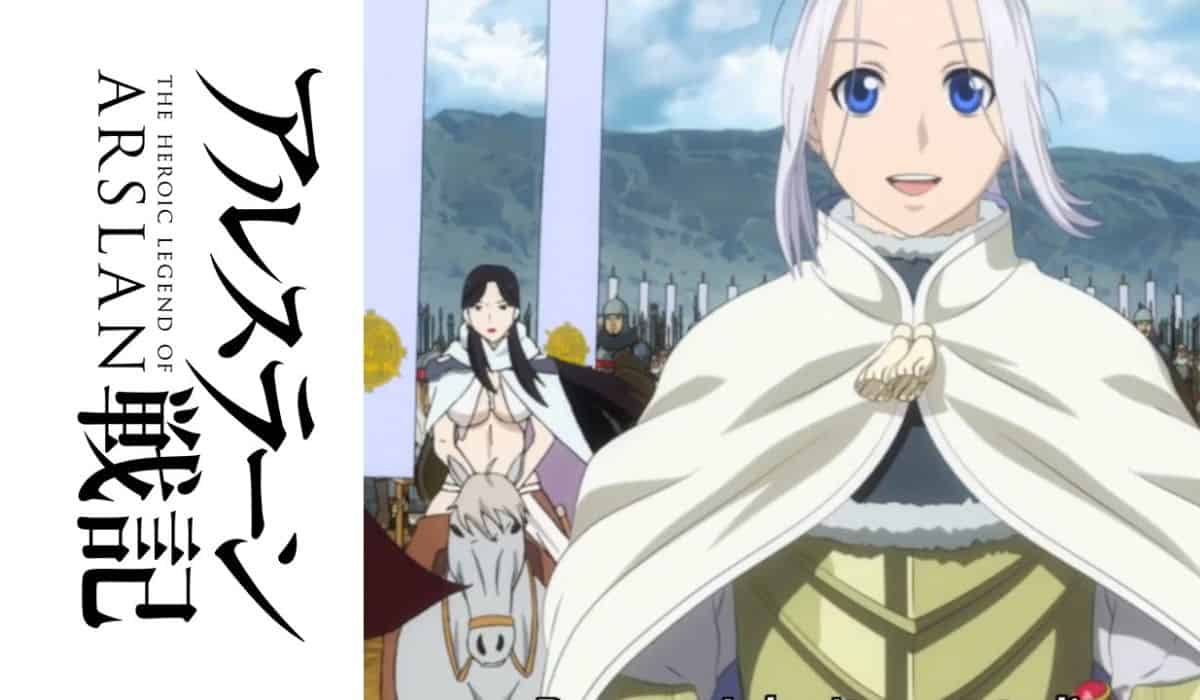
He is aided by some fascinating supporting characters. The grizzled warrior Daryun becomes Arslan’s chief protector and mentor, his blunt, honest counsel keeping the young prince grounded. Narsus provides scholarly intellect and tactical brilliance from his time as a court painter. The fiery priestess Alfred, unjustly accused of treason, also joins Arslan’s cause, her witchcraft proving useful on their travels.
Arslan’s journey forces him to confront harsh realities about the corruption and strife plaguing Pars. Through interacting with commoners, slaves, and those forgotten by the kingdom’s elite, Arslan gains perspective on what it truly means to lead. His innate compassion stands out as honorable considering Pars’ cutthroat political realm.
Mobile Suit Zeta Gundam
When it premiered in 1985, Mobile Suit Zeta Gundam built upon the massive success of the original Mobile Suit Gundam series and established itself as one of the most influential anime of the 1980s. Directed by Yoshiyuki Tomino, this 50-episode sci-fi epic expanded the Gundam universe into darker, more complex territory.
Zeta Gundam is set seven years after the One Year War, which saw humanity fight for independence against the Principality of Zeon. Now, teenager Kamille Bidan gets caught up with the paramilitary Anti-Earth Union Group (AEUG) in its rebellion against the Earth Federation’s oppressive Titans military branch. He pilots the next-generation Gundam mobile suit Zeta Gundam in the growing conflict.
The anime’s maturation from the original Gundam mirrors Kamille’s coming-of-age story as a Newtype. He contends with not just military battles but his own anger issues and search for purpose. Zeta Gundam took a more nuanced look at the effects of war, politics, and identity.

While still featuring plenty of mecha action, Zeta Gundam dialed back the super robot theatrics in favor of gritty realism. The robots were redesigned to appear more functional, and battles emphasized strategy over flashy acrobatics. The animation’s attention to detail in sci-fi elements like spaceships and colonies was ahead of its time.
Many consider Zeta Gundam among the first anime with a modern sensibility. The characters were more psychologically complex. Shades of grey colored the conflict instead of clear-cut good versus evil. Kamille and other Newtypes struggled with the philosophical burdens their powers brought.
Macross (Macross Delta)
The Macross franchise has captivated sci-fi anime fans for over three decades with its signature combination of transformable fighter jets, love triangles and music. 2016’s Macross Delta continues that legacy, bringing vibrant mecha action and melodrama to a new generation.
Produced in celebration of Macross’s 35th anniversary, the 26-episode Delta takes place eight years after the events of Macross Frontier. It follows the rookie pilots of the tactical sound unit Walküre as they utilize the power of song to combat an alien virus threatening the galaxy.
16-year-old Freyja Wion joins Walküre as the newest member, fulfilling her dream of following in her father’s footsteps as a singer. She finds herself caught in a love triangle between carefree fighter pilot Hayate Immelman and his brooding leader Mirage Farina Jenius.

This romantic drama plays out against a backdrop of intense aerial battles between Hayate’s Delta Squadron and the mysterious Aerial Knights of the Windermere Kingdom. The pilots utilize VF-31 Siegfried variable fighters capable of transforming into a jet, battroid, and GERWALK modes.
Walküre’s tactical sound system produces protective waves that neutralize the Var Syndrome virus infecting Windermere’s warriors and turning them berserk. Freyja’s singing voice has the power to calm the frenzied berserkers. This gives Walküre a critical support role on the battlefield.
Uchuu Senkan Yamato 2199 (Space Battleship Yamato 2199)
Among sci-fi anime’s most iconic and influential series, Uchuu Senkan Yamato premiered in 1974 and spawned films and remakes that continue its legacy decades later. Uchuu Senkan Yamato 2199 represents the franchise’s most modern adaptation, translating its epic space opera to a new generation.
Produced by AIC and Xebec studios, Yamato 2199 premiered in 2012 as a 26-episode anime series reinventing the original’s story while respecting its core themes. It takes place in a ravaged Earth defeated by alien invaders and follows a desperate mission to find a device that can restore the planet’s surface.
The anime follows the crew of the titular battleship Yamato as humanity’s last hope. Captain Juzo Okita leads the voyage to retrieve a message capsule from the planet Iscandar which contains the Cosmo Reverse technology to undo Earth’s devastation.

What elevates Yamato 2199 is how it balances grand space adventure with resonant characters and ideals. Captain Okita’s terminal illness adds poignancy as he dedicates himself to saving Earth before his time is up. Hotshot pilot Susumu Kodai learns discipline and empathy. Beautiful crewmate Yuki Mori provides compassionate balance.
The anime revamps the Yamato’s design with incredible detail and realism while retaining its iconic World War II battleship aesthetic. The space battles are resplendent with sweeping camerawork and vivid energy beams. The ship itself feels alive, thanks to the masterful animation.
Tytania
Amidst anime’s sea of high school romances and battle domes, one ambitious space opera stands out amongst the stars – Tytania. Adapted from Yoshiki Tanaka’s novel series, this sci-fi epic brought a galaxy-spanning narrative to life in a visually captivating way.
Though criminally under-watched in its initial 2008 run, Tytania’s intricate political storyline and grounded approach to interstellar conflict deserve appreciation.
Tytania takes place in a future where humanity has spread amongst the cosmos, divided into competing aristocratic factions. The most powerful clan is the Tytania dynasty, who have long oppressed the far-flung Tytanian Empire. Seeking to spark revolution, Fan Hyulick of the Rim planet Euriya attacks a Tytanian city before going into exile.
His brazen act plants the seeds of resistance. Fan and his followers target Tytania’s interests while gaining influence within the Empire to shift loyalties. However, Tytania remains steps ahead, utilizing agents like the seductive Idris to uncover and sabotage the rebellion’s plans.
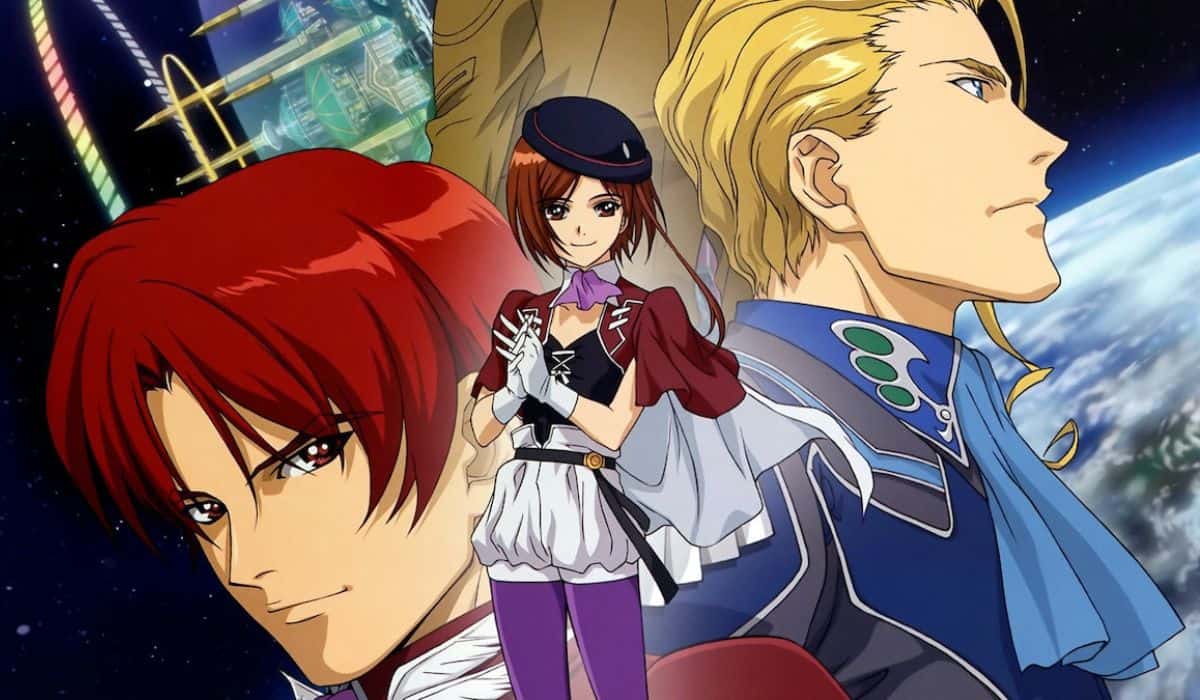
This shrewd political chess match sits at the crux of Tytania. The story trades giant robot battles for tense strategic maneuvers as Tytania and Euriya circle each other, searching for weaknesses to exploit. Complex schemes unfold grounded in economic disputes and clan loyalties, eschewing simplistic good versus evil divides.
What truly stands out is the sober lens Tytania views intergalactic warfare through. The anime highlights the collateral damage on civilians and soldiers, never glorifying combat. Protagonists debate hard choices where morals clash with survival, with no easy answers. The costs of revolution haunt Fan, even as Tytania’s autocracy fuels public dissent.
Code Geass: Hangyaku no Lelouch
When ‘Code Geass: Lelouch of the Rebellion’ premiered in 2006, few could have predicted this anime original would become a beloved sci-fi epic spanning 50 episodes. Set in an alternate timeline where the Holy Britannian Empire has conquered Japan, the story follows exiled prince Lelouch vi Britannia who gains the power to compel others to obey his commands. Using this Geass power and tactical genius, he leads a rebellion against the empire as Zero to create a better world for his sister.
Blending military action, political intrigue, and thought-provoking philosophy, ‘Code Geass’ takes viewers on a grandiose adventure exploring complex themes of morality and identity with deft storytelling and gripping drama.
The show’s fascinating alternate history provides a unique backdrop to the narrative. In this world, the Holy Britannian Empire has become the dominant global superpower after mastering advanced robotic technology called Knightmare Frames.
Japan has been conquered and stripped of rights, renamed Area 11. Resistance groups like the Order of the Black Knights secretly oppose Britannian rule. Lelouch’s journey from exiled prince to revolutionary leader offers intriguing commentary on imperialism and rebellion.
Creative mecha designs and stealth-action battle tactics using the Knightmares make for exciting militaristic spectacles. At its core, ‘Code Geass’ thrives on the dynamics between its central characters as they are shaped by grand ideals. Protagonist Lelouch uses his strategic brilliance and Geass power to construct an elaborate alter ego as Zero, the charismatic face of the Black Knights’ rebellion.
Though at times ruthless, he is motivated by a wish to create a just world for his sister. His opponent Suzaku believes change should occur through legal methods rather than violence. Their philosophical clash and tested friendship provide the show’s emotional core. Supporting characters like genius tactician C.C. and Lelouch’s fiercely loyal sister Nunnally add further dimension.
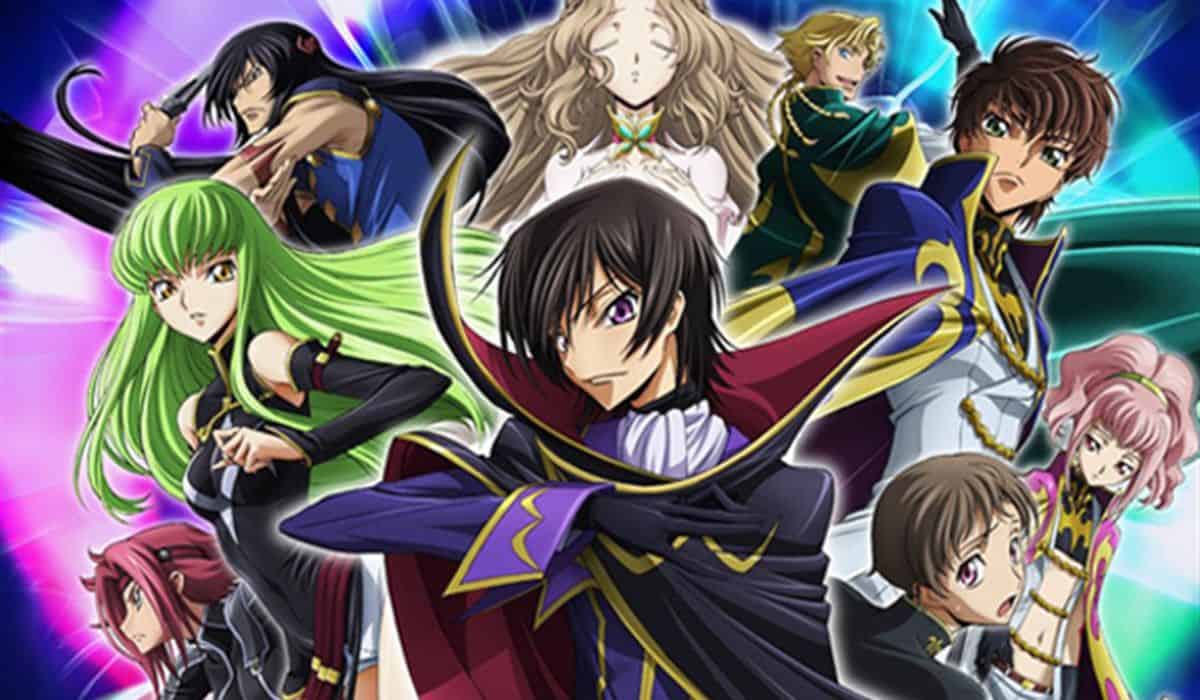
Complementing its rich characters and world is the anime’s exceptional production values. Fluid animation brings Knightmare Frame battles and hand-to-hand combat scenes to life.
The vibrant palette and lavish backgrounds illustrate the ornate aesthetics of Britannian cities and bases. The epic soundtrack punctuates emotional beats with booming symphonic pieces and melancholic piano melodies.
Engaging writing includes clever strategic exchanges and ethical debates that avoid feeling heavy-handed. The slick cinematic direction also aids storytelling during shocking twists. These technical elements unify to craft an enthralling anime epic.
The show’s gripping blend of action, drama, and sci-fi elements explains its mainstream popularity. At the same time, ‘Code Geass’ offers deeper insights into imperialism, ends justifying means, and the corrupting nature of power. Lelouch’s intentions begin nobly but slowly slide towards despotism as he resorts to harsher methods.
Attack On Titan
Ever since its release in 2013, the anime series ‘Attack on Titan’ has become an international pop culture phenomenon, capturing the hearts and imaginations of fans across generations.
The gripping post-apocalyptic story, coupled with its intense action sequences, complex characters, and myriad plot twists, explain why this anime has amassed such a devoted following worldwide.
‘Attack on Titan’ is set in a world where the remnants of humanity live inside cities surrounded by enormous walls that protect them from man-eating giants called Titans.
The plot follows Eren Jaeger, whose mother is eaten by a Titan during an invasion. This motivates Eren to join the military and eradicate the Titan threat, beginning his journey to uncover the origins of the Titans and their connection to humanity.
A huge part of the allure comes from the compelling premise of humans versus Titans. The Titans are naked, grotesque giants that devour humans seemingly without reason. Their jarring physical appearance and murderous nature provide a terrifying threat.
Watching the military engage in kinetic battles using Omni-Directional Mobility gear to fight the Titans makes for adrenaline-fueled scenes. The mystery behind the Titans’ origins and purpose also provides an intriguing overarching narrative.
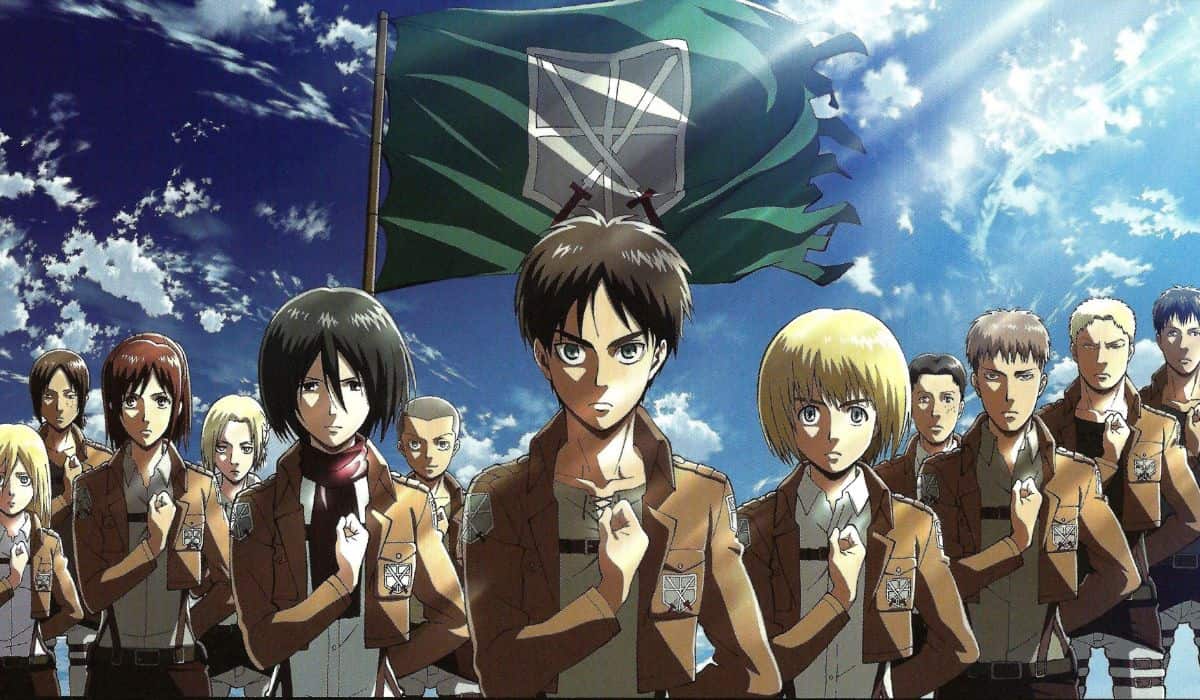
Beyond the thrilling Titan battles, the anime’s best strength is its complex, emotionally resonant characters. Protagonist Eren undergoes tremendous development, with his righteous anger morphing into determined idealism. His foil Captain Levi showcases discipline and skill, hiding inner trauma.
Mikasa’s protectiveness of Eren hides painful abandonment. ‘Attack on Titan’ spends time exploring each character’s motivations and relationships, making them seem real. Their struggles fighting both external and internal demons make for potent, impactful storytelling.
The anime’s production qualities also contribute to its widespread appeal. Its sharp-lined art style renders breathtaking cityscapes as well as terrifying Titans. Smooth and swift animation ramps up the kinetic action to frenetic levels.
The moody soundtrack of orchestral swells and tribal chants amplifies the drama. Voice acting covers a wide emotional range from vengeful shouts to resigned tears. Every technical element works in harmony to create an immersive atmosphere.
Neon Genesis
Hideaki Anno’s legendary anime series Neon Genesis Evangelion first premiered in 1995, and over 25 years later, its cultural impact still reverberates. Set in a post-apocalyptic world, Evangelion subverted mecha anime tropes to deliver a profoundly introspective exploration of the human psyche. Both a critical and commercial success, its avant-garde approach and blend of religious, philosophical, and psychoanalytic themes shattered conventions and changed anime forever.
Centered around teenage pilot Shinji Ikari, Evangelion follows Shinji’s recruitment by his estranged father to the paramilitary organization NERV. Their mission is to defeat invading creatures called Angels by piloting giant cyborg Evangelion units, with the eventual goal of preventing another worldwide cataclysm.
Amid this apocalyptic backdrop, the show’s core focus lies in examining its characters’ inner turmoils, relationships, and motivations. Shinji’s fragile self-worth, Asuka’s need for validation, and Misato’s anguish over her past – their inner battles take center stage through Evangelion’s intimate character writing.

Evangelion employs numerous techniques to accentuate its cerebral tone. The animation alternates between vibrant action and static evocative shots. Rapid inter-cutting conveys characters’ fragmented mental states. Episodes eschew linear storytelling, often repeating events from new perspectives. An avant-garde musical score by Shiro Sagisu complements the psychological themes.
The show’s distinctive visual design also amplifies its provocative nature. Evangelion’s sleek mecha blend biomechanical and religious elements, including Christian and Kabbalistic iconography.
The angular modernist architecture of Tokyo-3, juxtaposed against the Geofront’s organic environs, mirrors the contrast between humankind’s technological ambitions and the forces of nature they cannot fully control.
Monster
With its long-running mystery thriller narrative, Monster stands as one of the most acclaimed and well-known anime of the early 2000s. Based on the manga by Naoki Urasawa, this 74-episode series premiered in 2004 and unfolds a complex story spanning countries and decades.
Monster chronicles the journey of Japanese neurosurgeon Kenzo Tenma whose life enters turmoil after getting wrapped up in a string of murders. Set in 1980s Germany, the anime sees Tenma’s picture-perfect life shattered when he makes the fateful decision to save the life of a young boy over the town’s mayor.
That boy, Johan Liebert, later becomes the series’ antagonistic force, revealed to be a cunning serial killer with a shadowy past. Tenma realizes the grave mistake he made and dedicates himself to finding and stopping Johan. This sets into motion a cat-and-mouse adventure spanning the breadth of Europe.
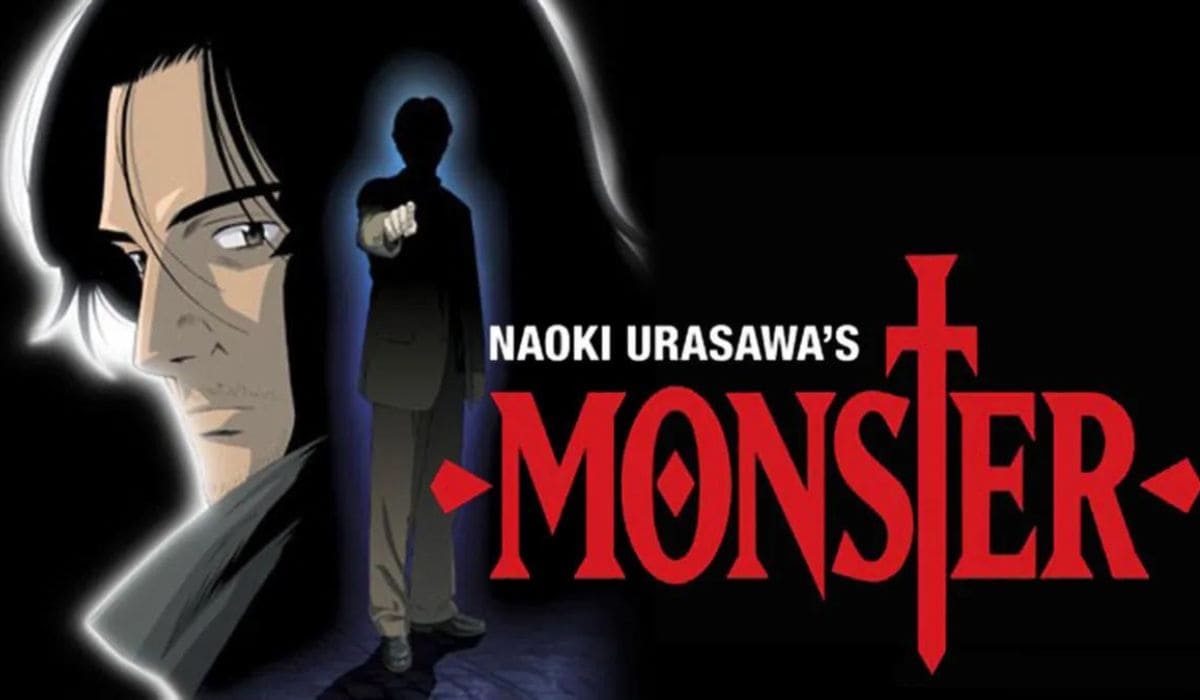
One aspect that makes Monster stand out is its grounded, realistic tone. Despite its thriller premise, the series has an understated dramatic style closer to live-action drama than conventional anime. It takes its time developing characters and building mystery through subtle clues rather than overt twists or theatrics.
The subdued color palette and background art create a bleak, haunting atmosphere. Many scenes simply follow Tenma’s introspective journey across cities and countryside in his pursuit of Johan. This methodical approach allows the series to fully explore its complex philosophical themes about morality and human nature.
Darker Than Black
With its dark themes, complex plot, and visually striking action sequences, Darker Than Black stands out as one of the most intriguing anime of the late 2000s. Directed by Tensai Okamura and produced by Bones studio, this 25-episode sci-fi thriller premiered in 2007 and built a dedicated cult following.
Darker Than Black captivates viewers with its unique setting and exploration of morally ambiguous characters. The story takes place in a fictional version of modern-day Tokyo, where a mysterious gate has appeared in the sky, altering the laws of physics and granting strange new abilities to select humans.
These superpowered humans, known as Contractors, must pay a price or sacrifice something precious in order to use their abilities.
The anime follows the missions of Hei, a Contractor codenamed “The Black Reaper,” who works as a spy and assassin. Under the guise of a kind-hearted Chinese exchange student, Hei is actually a hardened killer loyal to a mysterious Syndicate. His price for using electricity-based abilities is to gorge on food after completing his tasks.
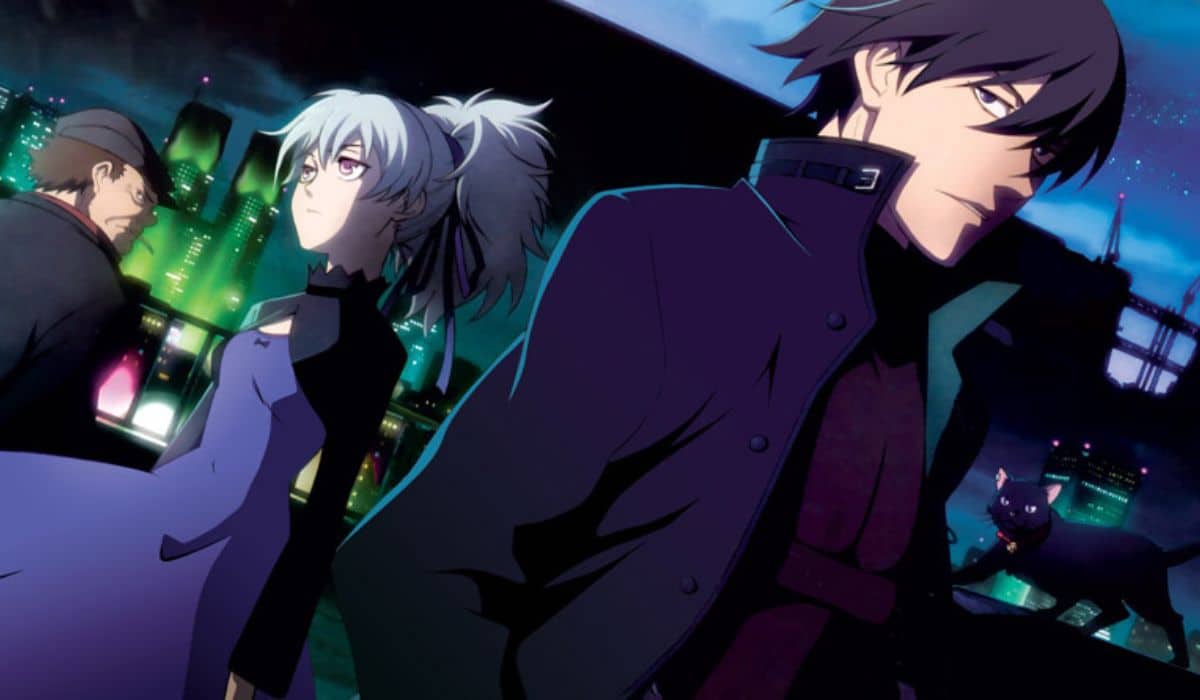
Hei and his teammates Yin and Mao work to uncover the mysteries behind the gate, Contractors, and a new lunar phenomenon called Hell’s Gate. This puts them in conflict with various intelligence agencies, enemy Contractors, and immortals known as Dolls.
The anime juggles elements of crime fiction, espionage, and superhero stories to create a unique world. There is plenty of stylish action as Hei takes on skilled assassins and corrupt Contractors with his martial arts skills, knives, and electrical attacks.
But there is also psychological drama as the series explores the nature of Contractor abilities and the toll it takes on their humanity.
RahXephon
RahXephon is a 26-episode sci-fi mecha anime that aired in 2002. It was directed by Yutaka Izubuchi and produced by Bones Studio. RahXephon has an intriguing plot that explores themes of human instrumentality, alternate dimensions, time travel, and romance.
The story is set in a version of Earth where Tokyo has been seized by an alien race known as the Mu. The rest of the planet is cut off from Tokyo, which exists in its own separate dimension. Only a select few have the ability to see Tokyo’s true form and the Mu that control it.
The protagonist is 17-year-old Ayato Kamina, who lives a normal life in Tokyo, unaware of the city’s true nature. But his life is upended when he meets a mysterious woman named Reika Mishima. She reveals to Ayato that he has the power to pilot a legendary robot called the RahXephon, which might be the key to overthrowing the Mu’s control.
Ayato gets drawn into the efforts of TERRA, an organization dedicated to freeing Tokyo and defeating the Mu. He joins their headquarters outside of Tokyo and learns to properly control the RahXephon. The RahXephon is a unique robot with its own sentient female humanoid persona named Quon.
Ayato struggles to harness the full extent of the RahXephon’s powers while also coming to terms with the fact that everything he thought he knew about the world and Tokyo was a fabricated lie. He and the RahXephon are mankind’s last hope of reclaiming their future from the mysterious invaders known as the Mu.
Death Note
In 2006, the anime adaptation of the manga ‘Death Note’ took the world by storm, garnering a massive cult following and critical acclaim. The 37-episode series follows Light Yagami, a gifted high school student who happens upon a supernatural notebook called the ‘Death Note’, which grants its owner the ability to kill anyone simply by writing their name while picturing their face. What follows is a thrilling cat-and-mouse game between Light and an eccentric, genius detective known only as ‘L’.
‘Death Note’ grabs viewers’ attention right from the start by presenting a unique moral dilemma – what would you do if you suddenly had the power to enact vigilante justice by killing criminals? Light starts off using the Death Note with good intentions, ridding the world of dangerous criminals and becoming a god-like figure called ‘Kira’.
However, his acts of playing judge, jury, and executioner eventually warp his morals and inflate his ego. Light’s psychological evolution from noble to corrupt demonstrates how power can change an individual and blur the lines between good and evil.
The series’ two main protagonists, Light and L, are fascinating foils to one another. While Light strives for an idealized world free from crime, L seeks pure, impartial justice. Their opposing worldviews result in captivating exchanges and schemes to expose the other’s identity and motives.
Their intellectually-charged game of deception makes for thrilling television. The supporting cast, including Light’s girlfriend Misa and detective rival Near, all have unique character dynamics that keep the story gripping across all 37 episodes.
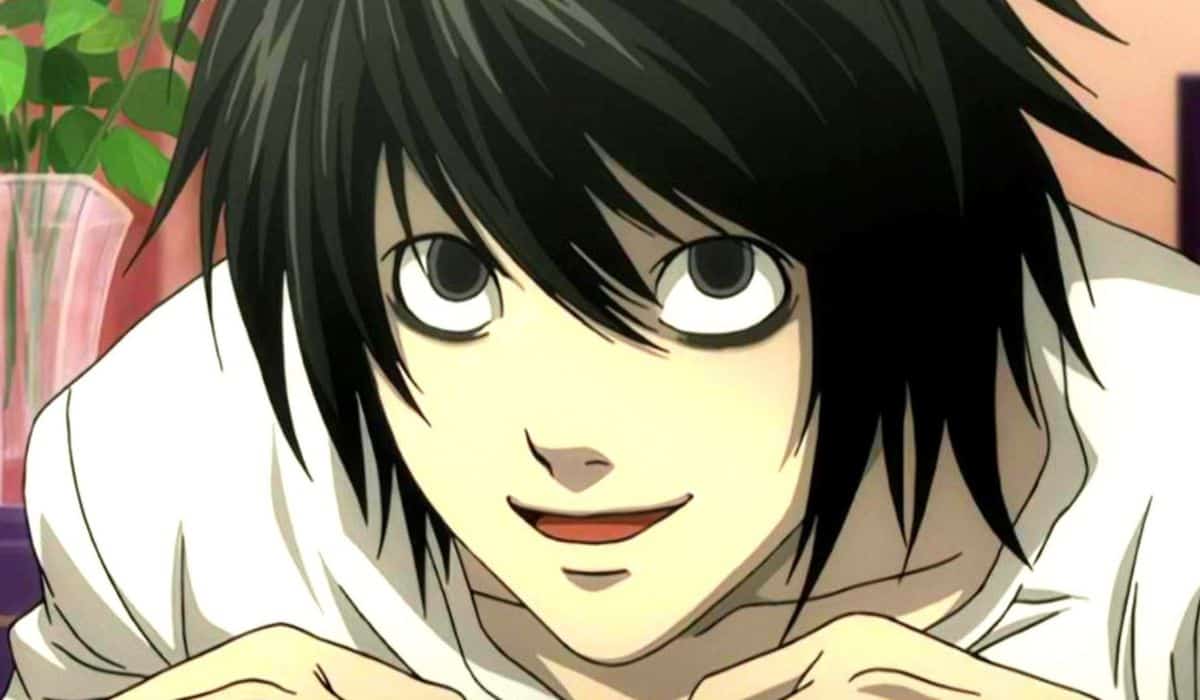
On the surface, ‘Death Note’ appears quite dark in tone, given its supernatural murder notebook premise. However, contrasting moments of offbeat humor and witty dialogue balance the morbidity. Light’s dramatic genius monologues and L’s predilection for sweets provide entertaining quirks to their personalities.
Over-the-top characters like Misa and Ryuk, the death god, also lend an energizing sense of the absurd. Despite its ominous concept, ‘Death Note’ tells an enthralling story without completely abandoning fun.
Of course, the unique animation style also contributes majorly to the show’s appeal. Mysterious dark blues and grays dominate many shots, complementing the sense of moral ambiguity. Clever visual metaphors, like floating apples and rapid montage sequences, creatively reinforce major themes.
Brief transitions into manga panel style and inventive scene framing techniques keep the visuals dynamic. The emotive character designs fluidly shift across diverse reactions. From a purely aesthetic perspective, ‘Death Note’ displays masterful and purposeful artistry.





